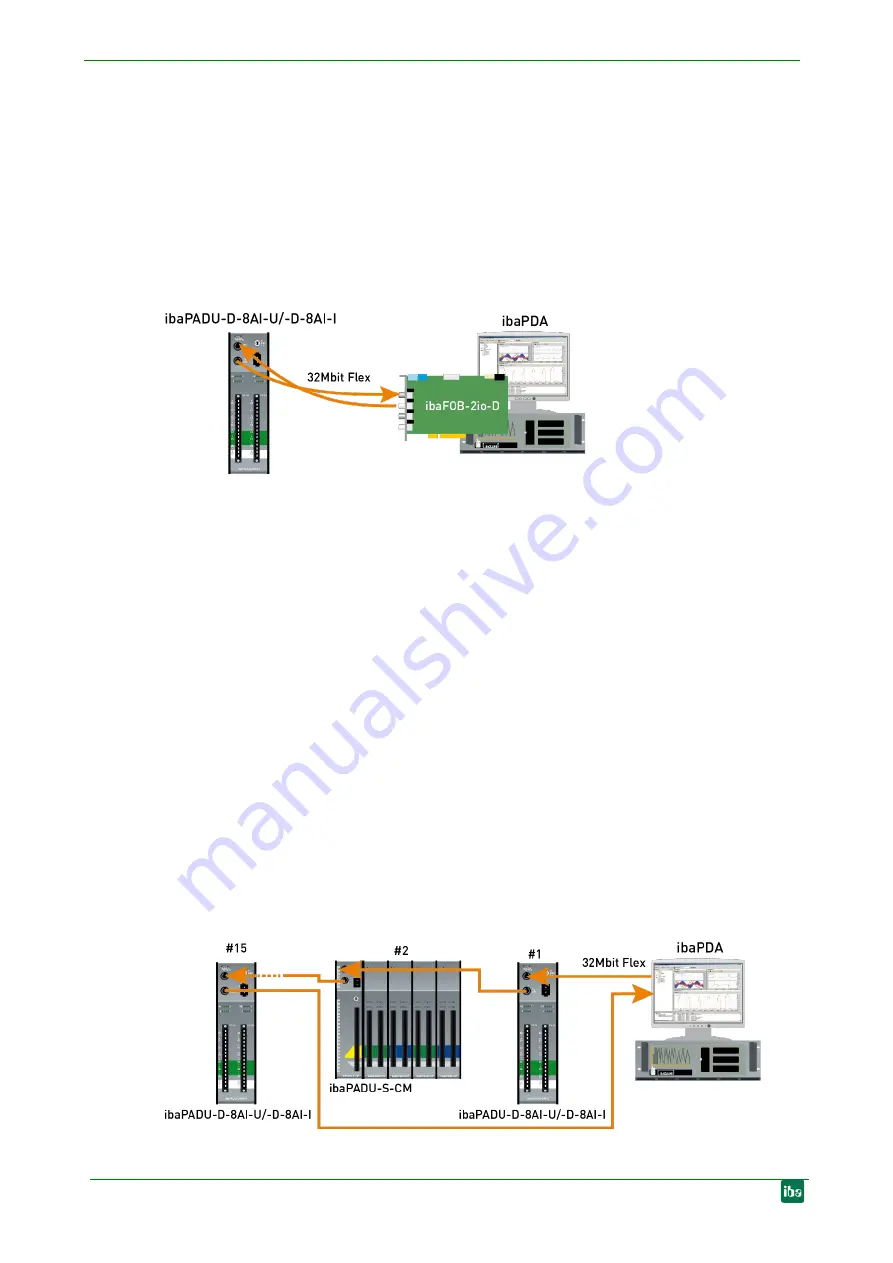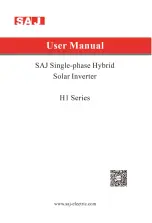
Manual
ibaPADU-D-8AI-U/-D-8AI-I
20
Issue 1.4
8
System integration
8.1
Point-to-point connection
The device is connected to the ibaFOB-D card in the ibaPDA PC via a bidirectional FO
cable. Configuration data as well as process data are transmitted using 32Mbit Flex.
With 32Mbit Flex, the sampling rate can be freely adjusted up to 40 kHz. The maximum
amount of data to be transferred depends on the selected sampling rate. When con-
nected point-to-point, all signals provided by the device can be transferred without re-
strictions.
Figure 8: ibaPADU-D-8AI-U with ibaPDA
8.2
Ring topology
With 32Mbit Flex, it is possible to connect up to 15 devices to a ring topology. Configu-
ration data and process data are transmitted in the ring.
Other 32Mbit Flex-enabled iba devices can be integrated into the ring as well. For exam-
ple, it is possible to use an ibaPADU-D device as an extension for an ibaPADU-S modular
system, when all slots are already occupied.
The amount of data per participant is allocated dynamically. ibaPDA calculates the
amount of data depending on the number of analog and digital signals configured in
ibaPDA and the smallest timebase configured in the ring.
The maximum amount of data is determined by the 32Mbit Flex protocol and must be
divided by the number of devices and the amount of data per device. A reference value
is approx. 3000 bytes per ms. The devices can work with different cycle times, however
the cycle time must be an integer multiple of the smallest cycle. Example: PADU #1
samples with 50 µs, PADU #2 with 1 ms, ibaPADU-S-CM with 4 ms, etc. If the maximum
data rate is exceeded, ibaPDA displays an error message and recommends increasing
the timebase or decreasing the amount of data.
Figure 9: Ring topology with 32Mbit Flex















































